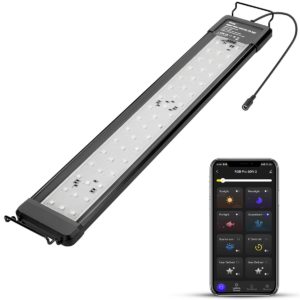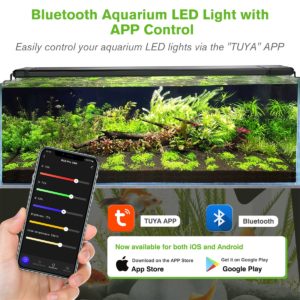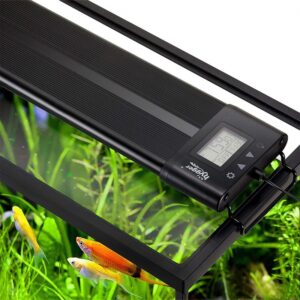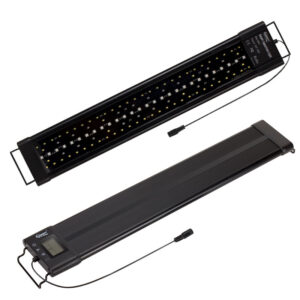The High Light Plants for Home Aquarium
Highlight plants are famous for thriving under intense lighting, showing lush foliage and vibrant colors. Ample light intensity is needed to support the photosynthetic process and promote robust growth. In this guide, let’s delve into the best high light plants for home aquariums.
High light plants
High-light plants require intense light to photosynthesize and promote their growth and flowering. Typically, high-wattage LED lights or specialized plant bulbs are great options. Also, most highlight plants need a longer photoperiod, generally about 8–12 hours. A consistent duration of light simulating a natural daylight cycle is helpful to plant growth.
But sudden exposure to high-intensity light can damage plant leaves. So if your aquarium initially does not provide sufficient light, it’s advisable to gradually acclimate the plants to the high light environment before planting them. Some common highlight plants include Dwarf Hairgrass, Glossostigma elatinoides, Alternanthera reineckii, and various hybrid varieties with red colors.
What does high light mean for plants?
High light, a light level, stands for the intensity of light required for optimal growth of plants. Commonly, high-light plants need a light intensity of more than 40 lumens per liter. Plus, different wavelengths of light, particularly red and blue light, are crucial for various stages of plant development, including leaf expansion, flowering, and fruiting.
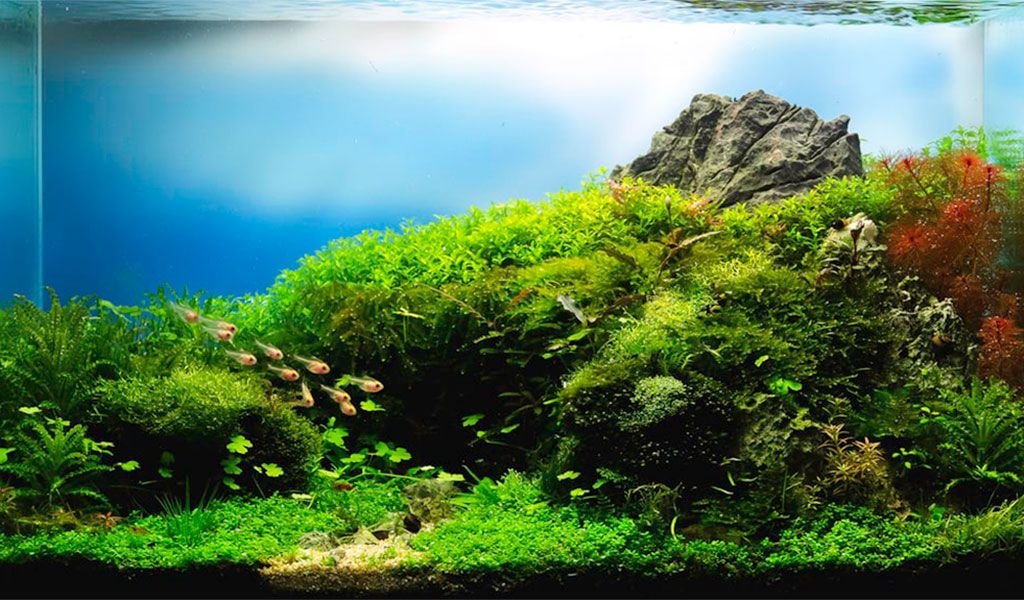
Aside from that, high light conditions ensure that light penetrates deep into the plant canopy, reaching the lower leaves and stimulating growth throughout the entire plant. So, the PAR values, measuring the amount of light for photosynthesis, for high-light plants typically should be 120-200μmol/s or higher (or over 80 PAR).
In addition to light requirements, high light plants also demand more maintenance. For example, suitable water parameters, stable water quality, moderate carbon dioxide supplement, adequate oxygen supply, etc.
Best high light aquarium plants
Amazon Sword (Echinodorus species)
Amazon Sword plants are popular for their large, lush green leaves and their ability to tolerate high light levels. They can be used as foreground plants in aquascaping, making great focal points in aquariums.
Vallisneria (Vallisneria species)
Vallisneria, also known as “tape grass” or “eelgrass”, features long and ribbon-like leaves that create a beautiful visual effect when swaying in the water. You can build a vallisneria jungle in your high-tech aquariums.
Rotala (Rotala species)
Rotala is a genus of stem plants that includes various species with different leaf shapes and colors. Many Rotala species thrive in high light and can add vibrant red, pink, or green colors to the aquarium.
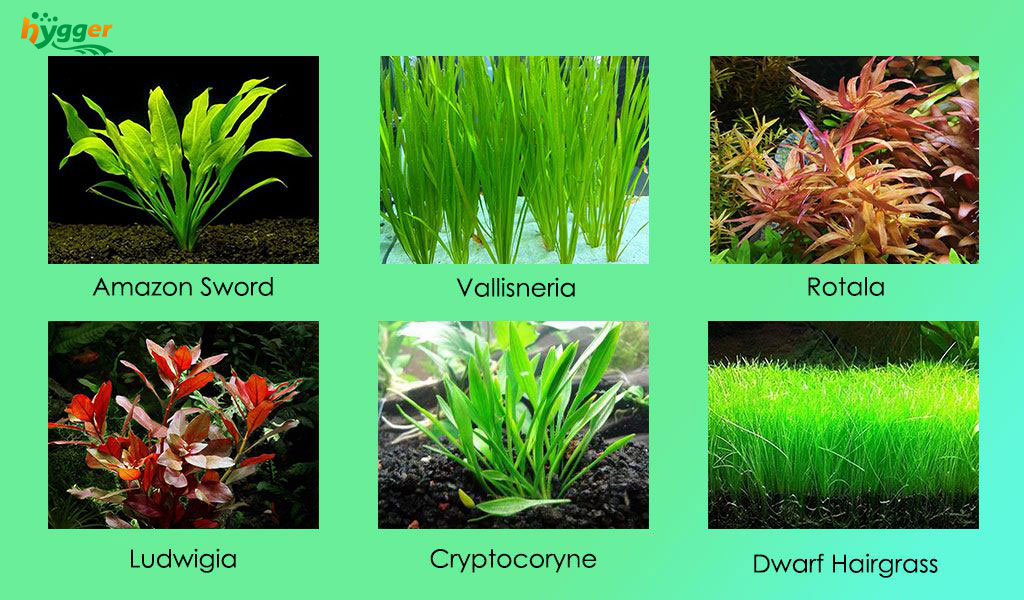
Ludwigia (Ludwigia species)
Ludwigia plants are known for their brilliant red, orange, or green foliage. They require high light to maintain their vibrant colors and can be used as background or mid-ground plants.
Cryptocoryne (Cryptocoryne species)
Cryptocoryne plants are popular for their broad, wavy leaves and ability to tolerate a wide range of lighting conditions, including high light. Also, they are often used as foreground or mid-ground plants.
Dwarf Hairgrass (Eleocharis parvula)
Dwarf Hairgrass is a popular carpeting plant that forms a dense, low-growing mat in the aquarium. It requires high light to thrive and can create a lush and grassy appearance.
How to care for high light plants in aquariums
Lighting
Ensure a suitable lighting system in your aquarium. LED lights are excellent choices for high-light setups. Given below are some reference values for keeping high light plants in aquariums.
- Lighting hours: 10–12 hours
- Light intensity: More than 40 lumens per liter
- PAR values: More than 80 PAR (120-200μmol/s, or higher)
CO2 supplementation
High-light plants often benefit from additional carbon dioxide (CO2) supplementation. You can use a CO2 injection system or liquid carbon supplements to provide an optimal CO2 level in the aquarium. Monitor CO2 levels to avoid overdosing, which can harm your fish.
Nutrient supplementation
Regularly provide essential nutrients through liquid fertilizers or root tabs. Look for fertilizers formulated explicitly for aquarium plants, which typically contain nitrogen (N), phosphorus (P), potassium (K), and micronutrients. Just follow the recommended dosages and adjust as needed based on plant growth and algae development.
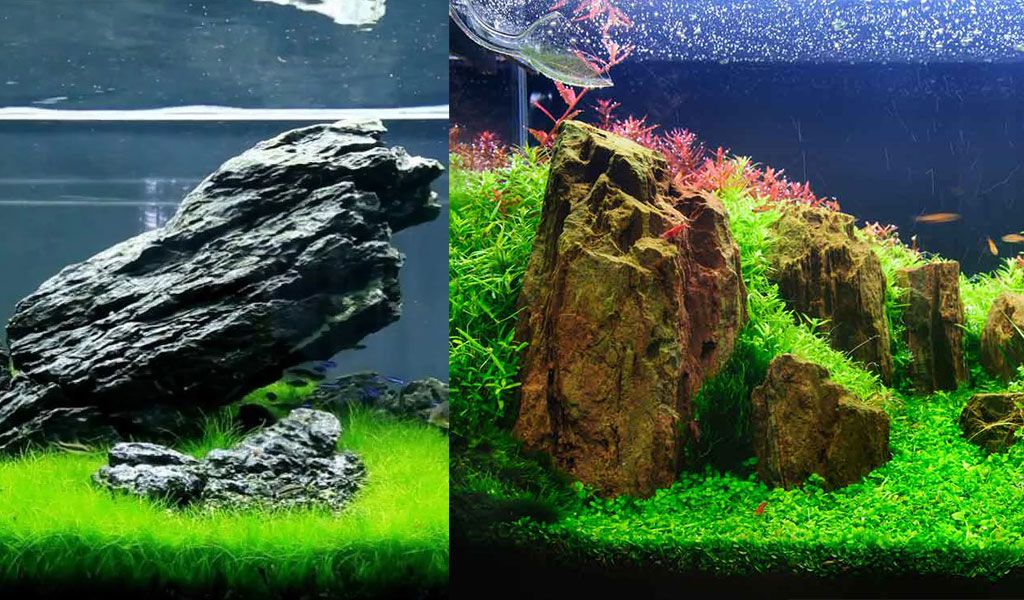
Water flow and oxygen supply
A moderate water flow rate helps to distribute nutrients and carbon dioxide evenly and prevent the accumulation of waste at the bottom. Besides that, sufficient oxygen is crucial for plant respiration and root health. Plus, if there are fish in a planted aquarium, adding an airstone is better. Because plants will release carbon dioxide at night.
Water quality
Perform regular water changes to remove excess nutrients and maintain stable water parameters. For example, change 15-30 percent of water once each week or once every two weeks. Furthermore, test your water regularly and make adjustments as necessary. In this case, aquarium water test strips will help you a lot and they can monitor 7 crucial water parameters and changes for freshwater and saltwater aquariums.
Algae control
High-light setups can be prone to algae growth. To prevent algae issues, maintain a balance between aquarium lighting, CO2, and nutrient levels. In the face of algae issues, you should address them promptly to prevent them from overshadowing your plants. Actually, you can deal with harmful or unnecessary algae via a bio solution – introducing algae eaters, like Amano shrimp, Chinese grass shrimp, and Cherry shrimp.
Pruning and maintenance
Trim and prune your high-light plants regularly to control their growth and promote bushier and healthier growth forms. Remove any dead or decaying plant material promptly to prevent it from affecting water quality.
The end
To conclude, high-light plants demand longer lighting hours and more intense light intensity. However, preventing algae from thriving in your tank is what you should keep in mind. Because high light gives a chance for algae growth.

